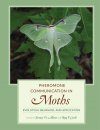By: Jeremy D Allison(Editor), Ring T Cardé(Editor)
401 pages, 101 colour photos and colour & b/w illustrations, 10 tables
![Pheromone Communication in Moths Pheromone Communication in Moths]()
Click to have a closer look
About this book
Customer reviews
Biography
Related titles
About this book
Common among moths is a mate-finding system in which females emit a pheromone, which induces males to fly upwind along the pheromone plume. Following the chemical identification of the pheromone of the domesticated silk moth in 1959, the number of moth species with identified pheromone attractants has climbed steadily, providing a rich base for review and synthesis.
Pheromone Communication in Moths summarizes moth pheromone biology, including the chemical structures used by the various lineages, signal production and perception, the genetic control of moth pheromone traits, interactions of pheromones with host plant volatiles, pheromone dispersal and orientation, male pheromones and courtship, and the evolutionary forces that have likely shaped these pheromone signals and their role in sexual selection. Also included are chapters on practical applications in the control and monitoring of pest species as well as case studies of pheromone systems of a number of species and groups of closely allied species.
Pheromone Communication in Moths will be an invaluable resource for entomologists, chemical ecologists, and pest management scientists, as well as for those studying pheromone communication and pest management.
Customer Reviews
Biography
Jeremy D. Allison is a Research Scientist with Natural Resources Canada, Great Lakes Forestry Centre.
Ring T. Cardé is Distinguished Professor of Entomology and occupies the A.M. Boyce Chair at the University of California Riverside.
By: Jeremy D Allison(Editor), Ring T Cardé(Editor)
401 pages, 101 colour photos and colour & b/w illustrations, 10 tables
"Pheromone Communication in Moths is a truly original and important synthesis that shows how far the field has come in the last twenty years. With a decided focus on evolution, the editors present case studies and provide challenging questions about how these communication systems evolved – a new and very exciting feature of the book."
– Charles Linn, Senior Research Associate in the Chemical Ecology Program, Department of Entomology, Cornell University
"Jeremy D. Allison and Ring T. Cardé provide a timely and comprehensive survey of one of the best-studied fields in animal communication. The chapters exceed high expectations and represent significant works of scholarship, offering definitive reviews informed by up to date studies."
– Tristram Wyatt, Senior Research Associate in the Department of Zoology, University of Oxford, and Emeritus Fellow, Kellogg College







































